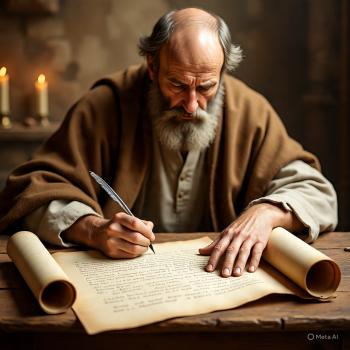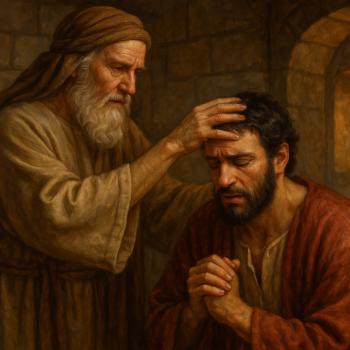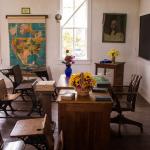I had the recent privilege of interviewing Dr. Robert A. Mullins, Professor and Chair of the Biblical and Religious Studies Department at Azusa Pacific University. Dr. Mullins is an outstanding archaeologist and fellow colleague who recently wrote a book that is extremely helpful for Bible enthusiasts, students, ministers, and academicians alike: Atlas of the Biblical World (Fortress Press). 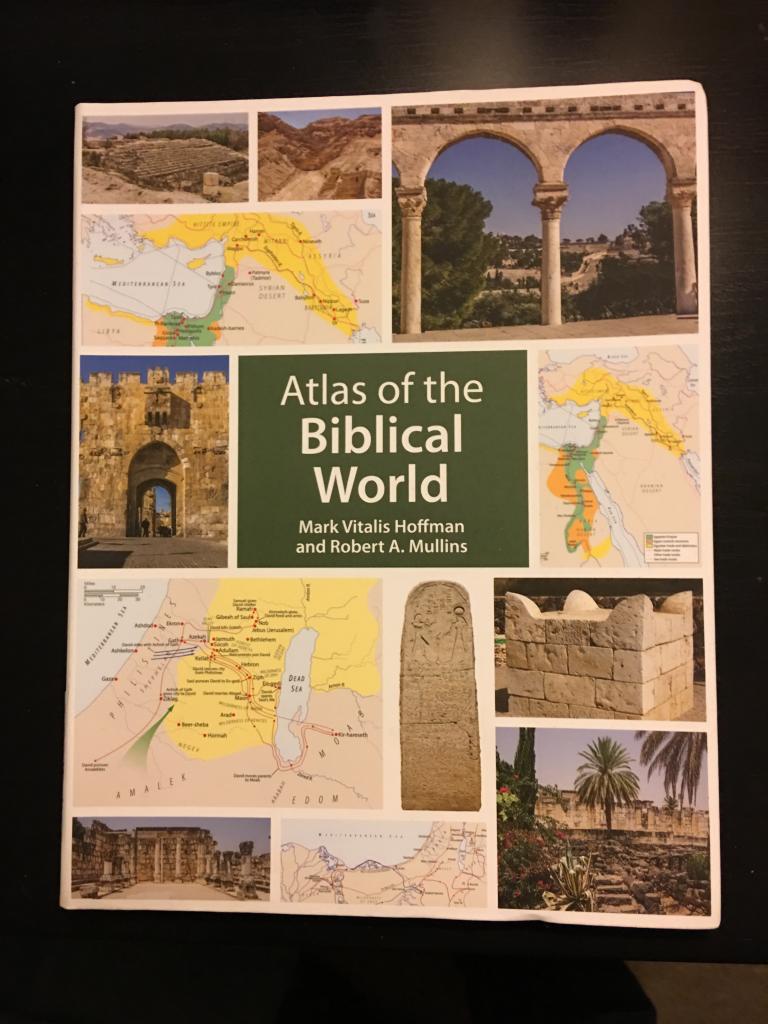 This user-friendly work, co-authored by Professor Mark Vitalis Hoffman of United Lutheran Seminary, is a virtual tour guide of the biblical world. It contains more than 60 full-color maps, along with charts, timelines, photographs of artifacts and important locations, and scholar commentary.
This user-friendly work, co-authored by Professor Mark Vitalis Hoffman of United Lutheran Seminary, is a virtual tour guide of the biblical world. It contains more than 60 full-color maps, along with charts, timelines, photographs of artifacts and important locations, and scholar commentary.
The Interview
BJ Oropeza: Bob, how did you first get interested in archaeology?
Robert Mullins: I grew up in the church, so I’m not a stranger to the Bible’s stories. As a high school graduation gift, my parents sent me to Israel to join an archaeological dig at a small Philistine outpost in the northern outskirts of Tel Aviv. It changed my life.
Suddenly, the Bible came alive in ways that I had not expected. For the first time, I was struck by how the Philistines were not the figures of legend, but real people with real struggles like you and me.
At the end of the summer, my dig mate and I serendipitously uncovered the first evidence of a Philistine temple. What we found was a modest limestone disc that ended up being one of two pillar bases that held up the roof of the temple. Ring a bell? Do you recall the story about Samson in Judges 16:29-30, who pushed apart the twin columns supporting the roof of the Philistine temple in Gaza?
What John Currid (my digging buddy) and I found was a much smaller version of the same temple described in Judges 16. Excited, I returned home ready to become an archaeologist. But a different kind of archaeologist. Not just to study the Bible. I wanted to live it. I wanted to both read and speak Hebrew. I wanted to uncover ancient Israelite houses and know what their clothing looked like. I wanted to hold their clay pots in my own hands. I wanted to know about the foods they ate and to learn about the diseases they suffered from. Most of all, I wanted to see God through their eyes. To walk a mile in their sandals. Real people. Real faith.
BJ: Please tell us more about your areas of expertise.
Bob: After returning to the States to study the Bible and archaeology, this wonder about the past brought me back to Israel where I completed my Ph.D. in Archaeology at the Hebrew University of Jerusalem under one of Israel’s most respected archaeologists, Amihai Mazar. The same archaeologist who had directed the excavations at Tell Qasile where we found the Philistine temple two decades before.
I started teaching courses in Archaeology, Geography, and History at Jerusalem University College on Mt. Zion, where I also guided Christian college students around the country. I took them from Dan to Beersheba. I took them into the Sinai Peninsula and to the Eilat on the Red Sea. We crossed the Jordan River to visit Petra and Jerash. Reading the land, living the Book.
BJ: How are your experiences and expertise reflected in your new book?
Bob: Twenty years in Israel did more than educate my mind. It transformed my soul. Even though I am back in the States where I currently teach at Azusa Pacific University, I find myself constantly drawing from the deep well of my life experience in Israel.
Every time I teach a Bible class, I cannot help but view its stories through my eyes. The eyes of someone who has trodden the very same paths as my Israelite forbearers. So when I write about the Israelites wandering in the wilderness in the Atlas, I do so as one who has trodden the Sinai desert many times.
Even experiences as mundane as watching storks fly from the top of the archaeological “tell” of Beth-shean, where I excavated for seven years, can have profound theological impact. As I watched them fly in formation down the Jordan Valley on their migratory journey between Europe and Africa (as they have done like clockwork for millennia), I could not help but be reminded that the Hebrew word for “stork” is hasidah—“faithful one.” The Hebrew name for this bird is no accident. It gives Jeremiah 8:7 new meaning, “Even the stork in the sky knows its appointed season . . . but my people do not know the requirements of the LORD.” Unlike the stork, the people of Judah did not understand what it meant to be consistently “faithful.”
Such insights are evident in Atlas of the Biblical World because it reflects who I am as much as it reflects what I have learned.
BJ: Could you break down for us the basic theme or content of the five parts of your book?
Bob: I wrote the Old Testament portion and Mark Hoffman the New Testament part.
The Atlas is divided into five parts that correspond with the five main stages of biblical history:
Part 1: Beginnings from the earliest human occupation in the Levant (the countries of Lebanon, Syria, Israel/Palestine, and Jordan) through the Wilderness Wanderings.
Part 2: The People of Israel in Canaan covers the time from Joshua’s conquest through the end of the United Monarchy of David and Solomon.
Part 3: A People Divided scopes the time when the United Monarchy split into two separate kingdoms—Israel in the north and Judah in the south.
Part 4: Invasion and Occupation is from the fall of Jerusalem through the Roman conquest of Palestine in 63 BCE.
Part 5: Jesus and the Emergence of Christianity covers the entirety of the New Testament and the early years following the Roman destruction of Jerusalem.
The nice thing about the Atlas is its compactness. There are 69 maps (in addition to charts and photos) with an accompanying text around 500 words long for each. Essentially, you are getting the entire sweep of biblical history together with the most important archaeological, geographical, and theological information and insights in just 170 pages. Not bad!
BJ: Who is your targeted audience in Atlas of the Biblical World, and what is the main thing that you hope they would gain from your book?
Bob: I wrote the Atlas primarily for an evangelical audience, who are more likely to pair deep study of the Bible with their walk of faith. But I also wrote it to be accessible to anyone—no matter who they are or what they believe—or don’t believe. More importantly, I wrote the Atlas for teachable individuals. If “reading the land and living the book” has taught me anything about life today, it is how this magnificent book from the past is being weaponized to marginalize and dominate others.
Readers of Patheos are among the few who are truly willing to engage the Bible as a text written by people not so different from us. In many cases, it was this understanding that guided what to include and not include in the 500-word limit comments per map.
Take my chapter on the Ancestral Narratives. It includes the role of the Matriarchs who were just as crucial in fulfilling God’s purpose as the Patriarchs. Or the chapter on Josiah’s Reforms. In a day when some continue to believe that only men are authorized to teach the Bible, we are reminded that Huldah, a woman prophet in 2 Kings 22:8-20, was specifically chosen to authenticate “the book of the law” found in the Jerusalem temple during the religious reforms as God’s word. If a woman was authorized to declare what appears to be the basis of the book of Deuteronomy as God’s word, then why should she be forbidden from teaching those very same scriptures?”
Finally, in my chapter on the exodus from Egypt, I provide new evidence from archaeology about the route the Israelites took when they escaped Egypt, the location of what the Hebrew Bible calls the “Reed Sea,” as well as possible pathways into the wilderness, and various options for the location of Mt. Sinai.
More than dogmatic assertions, Atlas of the Biblical World intends to instruct and open the reader to new possibilities. I pray that this book does for its readers what uncovering that pillar base from a Philistine temple did for me nearly 50 years ago.
BJ: Are there any final thoughts you would like to leave us with regarding your book?
Bob: Atlas of the Biblical World is all about placing the Bible in its historical, geographical, and theological context.
We all know how the stories we learned in school about American history make better sense when we stand on location. We see things that can never be communicated sufficiently in a book. While the Atlas will not transport you physically to Israel, the cleanly drawn maps and clarifying discussion is the next best thing to being there. Besides, when you do travel to Israel or adjacent Bible lands, you can take this light and easily-carried volume with you.
Moreover, the Atlas is based on the latest scholarship. We have learned a lot within the last decade or so that sheds light on biblical history. With better clarity about the key events in biblical history and seeing where and how they happened, we are better able to interpret the biblical story from the perspective of what God has done since the beginning.
BJ: Thank you, Bob, for sharing some of your insights and experiences with us!
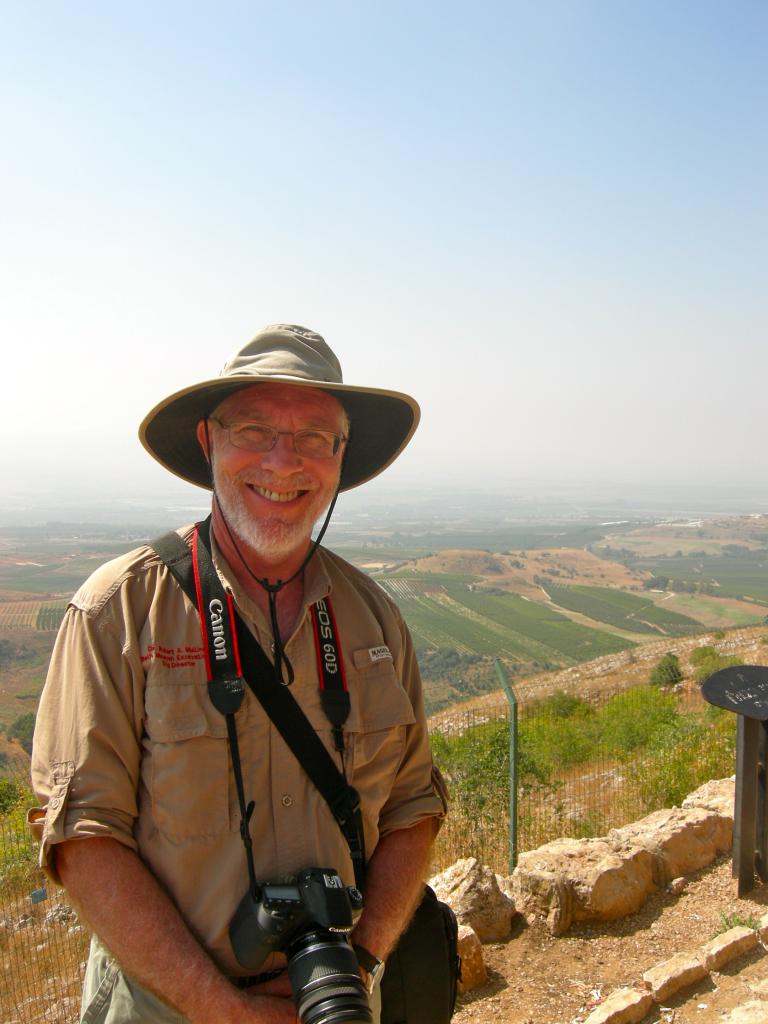
Professor and archaeologist, Dr. Robert A. Mullins at the lookout point of Tatzpit Dado, northern Israel.
Image 1: Cover picture of the book, Atlas of the Biblical World (my own picture of my own copy); image 2: picture comes courtesy of Robert Mullins, used by his permission.




